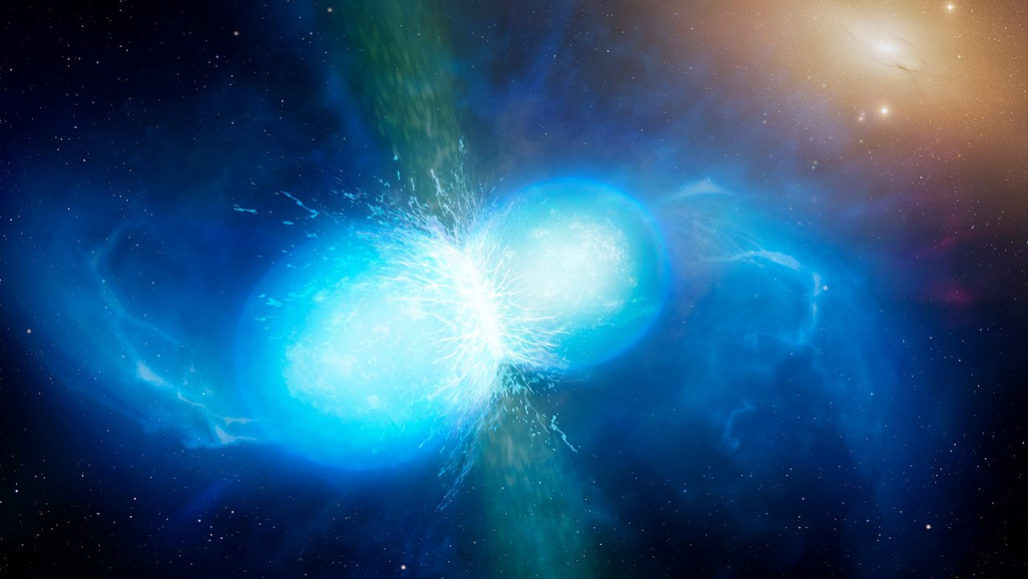Strontium is the first heavy element detected from a neutron star merger
The find supports the idea that these smashups create many of the elements heavier than ironFor the first time, astronomers have definitively ID’d a specific heavy element forged by a neutron star merger.
Evidence for the heavy element strontium appeared in the wavelengths of light, or spectra, of the afterglow from the first observed neutron star smashup (SN: 10/16/17). This discovery, reported online October 23 in Nature, offers the most direct evidence yet that neutron star collisions trigger a chain of chemical reactions called the r-process, thought to create many of the elements in the universe heavier than iron (SN: 4/22/16). It also sheds new light on the chaotic environment in which these exotic reactions happen.
Theories of physics have long predicted that about half of the universe’s heavy elements, such as silver and gold, were formed by the r-process — where atomic nuclei snatch neutrons from their surroundings to become heavier elements. But scientists weren’t sure where those reactions took place, because no one had directly seen the r-process happening in a specific celestial object or event — until the merger of two neutron stars, the superdense remnants of exploded stars, in 2017. Spectral analyses completed soon after the merger indicated that the collision had created a hodgepodge of heavy elements characteristic of the r-process (SN: 12/13/17).
But those investigations didn’t pinpoint which specific elements made up that mixture. That’s because researchers were examining relatively heavy r-process elements, whose complex atomic structures can generate millions of spectral features that haven’t all been identified yet — making these elements extremely difficult to tease apart, says astrophysicist Darach Watson of the University of Copenhagen.
Strontium, on the other hand, is relatively light compared with other r-process elements and has a simple atomic structure, which generates a few strong spectral marks that have been measured in the lab. When Watson and colleagues expanded the analysis to consider this and other r-process elements, they were able to identify strontium’s spectral fingerprint in spectra collected with the Very Large Telescope in Chile in the first several days after the merger.
The presence of strontium in the merger’s afterglow isn’t necessarily unexpected, but it “does tell us something interesting about the composition of the material that was released during the merger,” says Brian Metzger, an astrophysicist at Columbia University not involved in the work.
Namely, the material that produced this strontium must have had an unusually low neutron density, compared with matter typically found inside a neutron star. Otherwise, such an extremely neutron-rich environment would have created much heavier r-process elements, with many neutrons in their nuclei, rather than lightweights like strontium. The strontium-producing neutron star material probably underwent some other interaction — like being bombarded with ghostly subatomic particles called neutrinos spawned in the merger — that destroyed some of its neutrons, Metzger says. “It wasn’t just [normal] neutron star guts” that provided the raw material for this r-process element, he says.

0 comments :
Post a Comment